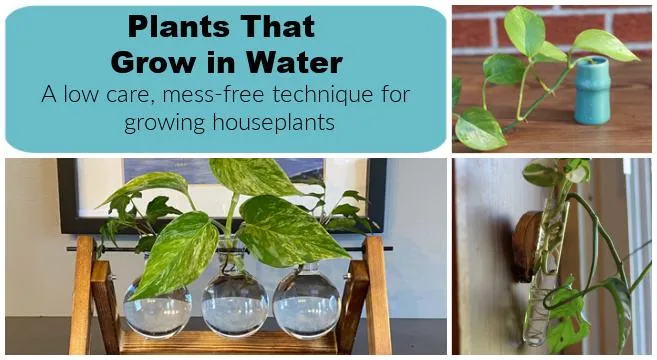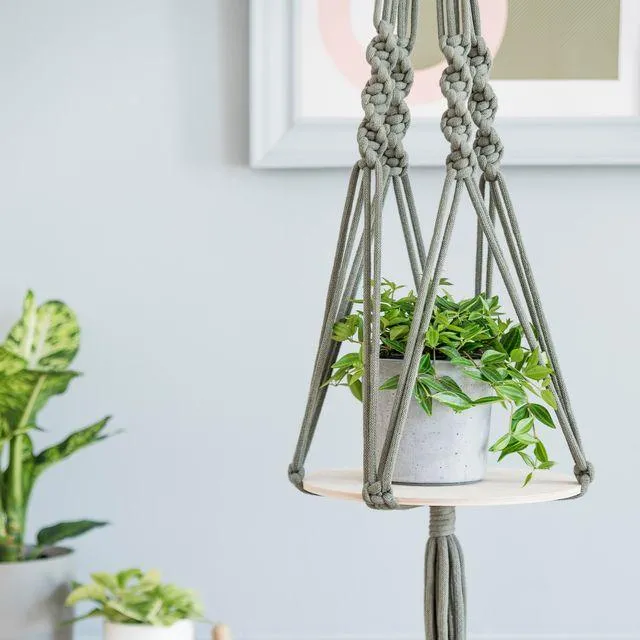The Many Benefits of Having Indoor Plant Wall Hangings
If you’re interested in bringing more greenery into your home but don’t have much floor space, indoor plant wall hangings are a great option to consider. Hanging plants provide visual appeal while also offering some nice perks. In this article, I’ll discuss the various plant wall hanging ideas and benefits you may enjoy.
They Purify the Air
Several studies have shown that certain plants are effective at removing toxic chemicals from indoor air. Pothos, English ivy, and peace lilies are some popular hanging varieties known to purify air by absorbing volatile organic compounds (VOCs) released by items like cleaners, paints, and permanent markers. From my experience living in small apartments, hanging plants have helped freshen the air noticeably.
They Add Life and Ambiance
Plants are a simple and attractive way to incorporate more nature into your living space. Hanging vines cascading down from above or succulents and air plants nestled on wall shelves instantly make a room feel livelier. The green foliage brings visual appeal, and the leaves provide a calming, spa-like vibe. I find that hanging plants especially create a lush, jungle-like effect ideal for small areas.
They Don’t Take Up Floor Space
One of the main benefits of wall plant hangers is that they maximize vertical space rather than using up valuable floor real estate. This makes them perfect for tight living quarters like studio apartments, narrow hallways, kitchens or bathrooms with limited square footage. Having plants on the wall also keeps leafy greenery at eye level so you can fully appreciate it. I’ve hung plants in spaces that would otherwise have felt empty and sparse.
Different Hanging Options to Choose From
There are many creative ways to display plants on walls. Some popular hanging planter ideas include:

- Macrame hangers – These woven fiber hangers come in various shapes and are inexpensive to make. Trailing plants like pothos and string of hearts look lovely hanging from macrame.
- Hanging baskets – Wire or fabric baskets provide stable, ventilated homes for vines and trailing plants. Try English ivy or wandering dude in baskets.
- Wall shelves – Sleek metal or wooden shelves mounted on walls provide stable surfaces for succulents, air plants and terrariums.
- Ceiling hangers – Height-adjustable swag hooks or chains let you hang hanging pots high above or cascade plants down walls elegantly.
- Command hooks – These strong, reusable hooks support lightweight hanging planters on walls or cabinets securely.
Basically, the options are limitless. You can get creative crafting unique planters from items like bottles, baskets or even repurposed pots. The display possibilities help maximize limited indoor space.
Easy Care for Busy Schedules
Hanging plants tend to be more low maintenance than their floor-based counterparts. Their elevated position means they dry out less quickly, so they often only require watering once every few weeks. This makes them ideal for busy individuals who struggle to find time for plant care. Additionally, hanging plants are less prone to dirt issues on furniture or floors from water overflow. On the whole, they are quite forgiving to imperfect care. When life gets hectic, my hanging plants have sort of saved me from plant neglect on many occasions!
Variety of Plant Choices
There are hanging plant options suitable for nearly every growing condition. For low-light rooms, try pothos, spider plants or philodendron. In medium light, English ivy thrives. String of hearts, string of dolphins and teddy bear vine prosper in bright, indirect light. Succulents like burro’s tail and string of bananas tolerate full sun on south-facing windows. No matter the light in your space, you’re sure to find hanging plants that will do well.
Furthermore, colorful trailing flowers like petunias, begonias and fuchsias cascading from hanging baskets add a pop of seasonal color. Orchids, air plants and carnivorous pitcher plants provide eye-catching unconventional appeal. There’s a wide range to choose from based on your design preferences and growing conditions.
They’re Budget-Friendly
Hanging plants are an affordable way to beautify your indoor surroundings. Trailing pothos, philodendron and spider plants can often be found for just a few dollars. DIY macrame hangers or repurposed containers allow you to display plants inexpensively too. Granted, some more rare hanging plants may carry higher price tags – but basic varieties are quite pocket-friendly. They are also low maintenance, so ongoing care costs little over time.

In comparison to pricier indoor décor like artwork or furniture, hanging plants deliver beauty and benefits at an entry-level price point. Especially for renters or students in temporary housing, plants provide an easy, affordable way to make blank walls feel lively. Kind of a great budget-friendly home upgrade, if you ask me!
They’re Perfect for Small Spaces
Last but not least, hanging plants are ideal for maximizing tiny living areas. From studios to cramped apartments, vertical walls often represent the only real “gardening” space available. With hanging pots, you gain more usable interior square footage without sacrificing greenery. They work especially wellgrouped together to cover an empty wall in a large hanging planter display.
For example, I once lived in a super tiny garden-level basement suite that felt incredibly dreary. But hanging a collection of pothos, spider plants and ivy turned a drab concrete wall into a lush verdant feature. It completely transformed the depressing space into a cozy green oasis. So even if your place is puny as can be, wall hangers help you garden on a pint-sized scale.
So in summary, hanging plants bring beauty, practical benefits and versatility to any home or living space. Their low-fuss care makes them suitable for busy lifestyles too. With so many creative mounting options and a wide assortment of trailing, flowering and succulent varieties to choose from, indoor plant wall hangings are definitely worth considering. Give them a try – your living space will thank you!
Factors to Consider When Choosing Indoor Plants for Wall Hanging
| Plant | Light Needs | Watering Needs | Best Location | Care Tips |
|---|---|---|---|---|
| Pothos | Low | Allow soil to dry out between waterings | Any room | Trim vines to encourage growth |
| Spider plant | Low-medium | Water when top inch of soil is dry | Bright, indirect light | Propagate new plantlets from plant |
| Philodendron | Medium | Water when top inch of soil is dry | Bright, indirect light | Repot when roots emerge from drainage holes |
| English ivy | Low-medium | Water when top inch of soil is dry | Bright, indirect light | Prune to maintain shape or encourage growth |
| Peperomia | Medium | Water when top inch of soil is dry | Bright, indirect light | Prune leggy stems to encourage compact growth |
FAQ
-
Do indoor plant wall hangings need sunlight?
Most indoor hanging plants need a bit of natural light to survive. Direct afternoon sun through a window is generally fine for many types. However, some plants like ferns prefer lower, shadier spots. Basically, check what kind of light your particular plant likes best.

-
How often do I water hanging plants?
It depends on the plant, but as a general rule, hanging plants need water around once per week. The soil should dry out partially between waterings. Overwatering can cause root rot, so it’s better to water less than more. You can stick your finger in the soil and check if it feels dry before watering again.
-
What kinds of plants work well for hanging baskets?
Some good options are ivy, pothos, Swedish ivy, philodendron, or English ivy. Ferns and spider plants also tend to hang down well. Be sure the plant has a trailing or vines growth habit. Avoid plants with thick, woody stems that won’t cascade nicely. Succulents and cacti don’t usually work as well for hanging baskets due to their upright forms.
-
How do I keep insects off hanging plants?
You may want to occasionally check hanging plants for signs of pests like spider mites, mealybugs, or scale insects. As a preventative measure, some folks swear by neem oil spray or insecticidal soap. Maybe try wiping the leaves regularly with a damp cloth to remove any bugs. You could also try placing the pot near plants cats like to lay on – the cat hair may deter certain insects! Just be careful not to overdo sprays around kitty.
-
What’s the best way to mount hanging planters?
For light planting pots, simple metal hook and eye screws inserted high up in the ceiling beams seem to work great. Heavier planters might call for lag bolts into ceiling joists or wall studs. However, always pre-drill pilot holes and be careful not to crack plaster or damage wiring. Don appropriately lengthy chains or ropes so the pots can hang without tilting excessively. Perhaps test the strength and durability before putting too much weight on the mounts, just to be safe!
-
How do I deal with spiders in hanging plants?
It’s fairly common for spider webs and tiny spiders to take up residence in hanging pots. Usually they won’t harm your plants – spiders eat other bugs, after all. Still, it may startle some folks to find several webs in their plant corner! Gently remove webbing every week or so with an old toothbrush. You can also try placing the pots in a spot spiders seem less inclined to inhabit. Spraying the area with water occasionally appears to deter webbing as well, yet spiders typically find another home rather quickly. In the end, learning to live with occasional tiny spidersmay be the simplest solution.

-
Are hanging plants difficult to care for?
With the right plant choices and a bit of watering know-how, hanging baskets don’t have to require much work. Pothos, ivy, and philodendrons are very forgiving of occasional dry spells. At the same time, their trailing forms mean little pruning beyond removing dead growth. Overall, hanging plants seem to suit almost anyone’s schedule – from busy folks to brown thumbs! Just be sure not to let them dry out for lengthy periods. It’s best to err on the side of less frequent, deeper waterings for a hassle-free hanging garden even over lazy weekends.
